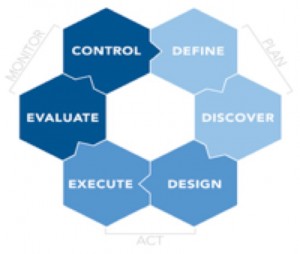At this stage, our organization has defined business objectives for Data Governance programme and shares business term definitions which it uses. This logical area of data and information management has been supplemented with a bridge to technical metadata – in the previous step we obtained one place, which combines the information on technical data flow in the organization and its logical meaning, Data Steward responsibility and supported business processes.
Step 3: data quality monitoring
The steps described in the previous entries represent the minimum scope of tasks which the organization should perform in order to build a base for executing Data Governance initiatives. Once we have understood the substantive meaning of the data and we are able to track its flow in the enterprise’s IT ecosystem, we can focus on the next area of responsibility i. e. data quality control and management. The initial step related to data quality management is data profiling and quality monitoring. It allows the organization to be aware of potential threats and plan actions that aim at achieve the required quality of the data used in customer service or in decision-making.

Based on the principles defined by data owners (Data Stewards), SAS Data Quality is able to automatically monitor the quality of data processed by the organization and report the related metrics (this process is elaborated on in Building a Data Quality Scorecard for Operational Data Governance). Using the business definitions (created in step 1), the organization can assess the effect of low data quality on decisions it produces and based on the knowledge of data flow in the organization (gained in step 2), it can analyze the origin of incorrect data and correct it directly at its roots.
Data Governance initiative started this way can play a significant role in increasing the organization effectiveness, enhancing the quality of customer service, minimizing errors in business processes and limiting the risk resulting from strategic decisions made based on inaccurate data.
What next?
The process of Data Governance programme development is not limited to the three steps described above; however, defining the sequence of future actions must be adjusted to the organization’s business objectives.
Naturally, the next step is to evolve the area of data quality management, implementation of automated standardization solutions and data correction, including support for the processes of its manual reconciliation. Many companies decide here to build dedicated IT systems whose task is to manage the registers of key objects such as customer, product or component catalogue important for the production process. Such systems are called Master Data Management.
The second important area can be support for the evolution of analytic systems and data warehouses, using the obtained picture of data flow in the organization. Based on this picture, it is possible to gradually introduce simplifications and optimize the IT infrastructure with the use of e. g. data virtualization solutions (SAS Federation Server).
We invite you to make yourself familiar with SAS Data Governance products!
